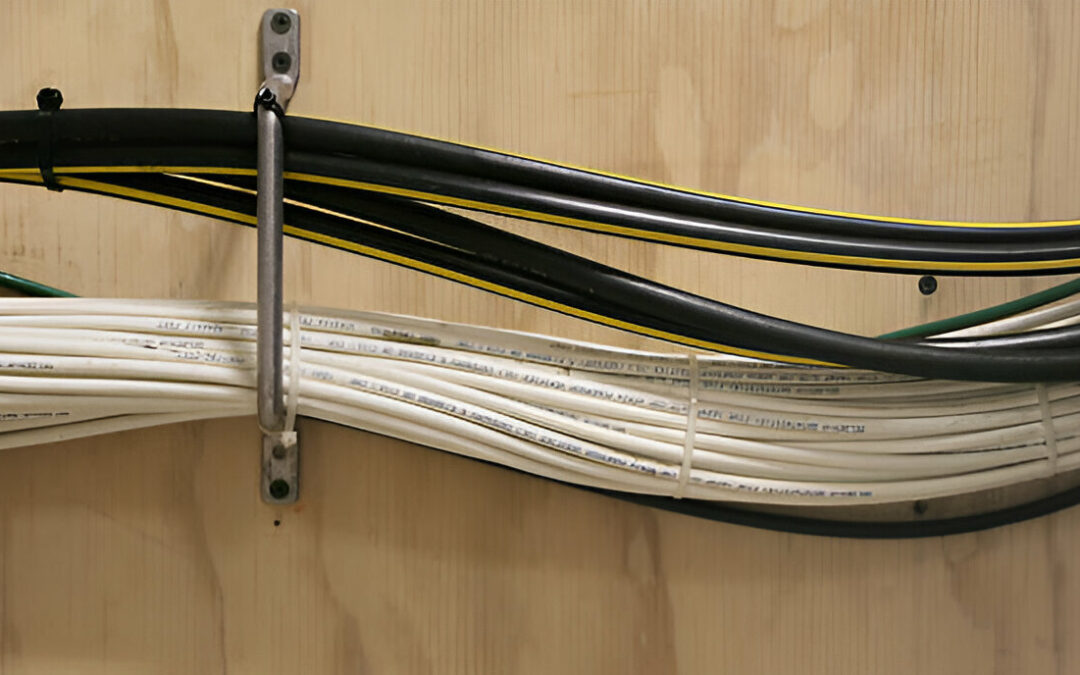How Are Cable Assemblies Overmolded? Cable assemblies are integral components in various electronic devices, providing connectivity and functionality. Overmolding is a process commonly used to enhance the durability, protection, and aesthetics of cable assemblies. In this comprehensive guide, we will delve into the intricacies of how cable assemblies are overmolded, exploring the process, materials involved, applications, and benefits.
Here’s How are Cable Assemblies Overmolded?
Understanding the Overmolding Process:
Preparation and Design
The overmolding process begins with careful preparation and design considerations. Engineers analyze the specific requirements of the cable assembly, including the shape, size, and functionality. They design molds and tooling that will encapsulate the cable assembly while providing the desired features and characteristics.
Injection Molding
Injection molding is the primary technique used in overmolding cable assemblies. This process involves injecting molten material into a mold cavity, where it cools and solidifies to form the overmolded structure. Injection molding allows for precise control over the shape, thickness, and texture of the overmolded material.
Encapsulation
During the overmolding process, the cable assembly is placed into the mold cavity, and molten material is injected around it. The material flows into intricate channels and gaps in the assembly, encapsulating it completely. Once the material cools and hardens, it forms a protective and cohesive layer around the cable assembly.
Curing and Finishing
After the overmolding process is complete, the assembly undergoes curing to ensure proper bonding and structural integrity of the overmolded material. Depending on the type of material used, curing may involve heat, UV light, or chemical processes. Once cured, the overmolded assembly may undergo additional finishing processes, such as trimming, polishing, or surface treatments.
Materials Used in Overmolding
Thermoplastic Elastomers (TPE)
TPEs are commonly used in cable assembly overmolding due to their flexibility, durability, and ease of processing. These materials offer excellent resistance to environmental factors such as temperature extremes, moisture, and chemicals. TPEs also provide cushioning and shock absorption properties, protecting the cable assembly from impact and vibration.
Thermoset Polymers
Thermoset polymers, such as polyurethane and epoxy resins, are utilized in overmolding applications where superior mechanical and electrical properties are required. These materials offer high strength, rigidity, and resistance to heat and abrasion. Thermoset polymers provide exceptional adhesion to a wide range of substrates, ensuring reliable encapsulation and protection of cable assemblies.
Silicone Rubber
Silicone rubber is favored for its biocompatibility, flexibility, and resistance to extreme temperatures. Silicone overmolding is commonly used in medical devices, automotive components, and industrial applications where stringent performance requirements must be met. Silicone rubber provides a soft, non-slip surface that enhances grip and comfort for end-users.
Applications of Overmolded Cable Assemblies
Electronics and Electrical Devices
Overmolded cable assemblies are widely used in electronics and electrical devices, including smartphones, computers, and appliances. The overmolded layer provides protection against moisture, dust, and mechanical stress, prolonging the lifespan and reliability of the assembly.
Automotive Industry
In the automotive industry, overmolded cable assemblies are employed in vehicle wiring harnesses, sensors, and connectors. The overmolded layer enhances weather resistance, corrosion protection, and vibration damping, ensuring optimal performance in harsh operating environments.
Medical Devices
Overmolded cable assemblies play a critical role in medical devices and equipment, such as patient monitoring systems, diagnostic instruments, and surgical tools. The biocompatibility and sterilizability of overmolded materials make them suitable for use in healthcare settings, where safety and reliability are paramount.
Benefits of Overmolded Cable Assemblies
Enhanced Durability
Overmolding provides a durable and protective layer that shields cable assemblies from physical damage, environmental hazards, and chemical exposure. This enhances the longevity and reliability of the assemblies, reducing the need for maintenance and replacement.
Improved Aesthetics
The overmolding process allows for customization of the appearance and texture of cable assemblies, enhancing their aesthetics and brand identity. Molded-in logos, colors, and textures can be incorporated to create visually appealing and distinctive products.
Increased Safety
Overmolded cable assemblies offer improved safety by preventing exposed wires, sharp edges, and potential electrical hazards. The encapsulated design reduces the risk of electrical shock, short circuits, and fire hazards, ensuring the safety of end-users and equipment.
Factors Influencing Overmolding Process
Design Considerations
The success of the overmolding process depends on careful design considerations. Factors such as the geometry of the cable assembly, the location of connectors and terminations, and the desired properties of the overmolded material must be taken into account. Design engineers use computer-aided design (CAD) software to create precise molds and tooling that meet the requirements of the application.
Material Selection
Choosing the right material for overmolding is crucial to achieving the desired performance and functionality. Engineers evaluate factors such as mechanical properties, chemical resistance, temperature stability, and regulatory compliance when selecting materials. Compatibility between the overmolded material and the substrate is essential to ensure proper adhesion and bonding.
Mold Design and Tooling
The design of the mold and tooling used in the overmolding process is critical to achieving consistent and high-quality results. Mold design considerations include the number and configuration of cavities, gate placement, venting, and cooling channels. Precision machining techniques, such as CNC milling and EDM (electrical discharge machining), are used to create molds with tight tolerances and complex geometries.
Future Trends and Innovations
Advanced Materials
Advancements in material science are driving the development of new materials with enhanced properties for overmolding applications. Materials with improved flexibility, durability, flame resistance, and biocompatibility are being developed to meet the evolving needs of industries such as electronics, automotive, medical, and consumer goods.
Additive Manufacturing
Additive manufacturing, also known as 3D printing, is emerging as a viable alternative to traditional injection molding for producing overmolded parts. Additive manufacturing technologies, such as selective laser sintering (SLS) and multi-material 3D printing, enable the rapid prototyping and production of complex geometries with customizable properties.
Smart Overmolding
Smart overmolding involves the integration of sensors, actuators, and electronics directly into the overmolded structure. This enables the creation of intelligent and interconnected devices with sensing, monitoring, and control capabilities. Smart overmolding has applications in industries such as IoT (Internet of Things), wearable technology, and smart infrastructure.
Conclusion!!
Overmolding is a versatile and effective process for enhancing the durability, protection, and aesthetics of cable assemblies. By encapsulating cable assemblies with resilient materials such as thermoplastic elastomers, thermoset polymers, and silicone rubber, manufacturers can create robust and reliable products for a wide range of applications. Whether used in electronics, automotive, medical, or industrial settings, overmolded cable assemblies offer numerous benefits, including enhanced durability, improved aesthetics, and increased safety.




Recent Comments